This was published 9 years ago
Tasmania: Art galleries and musuems to see outside of MONA
MONA has helped prevent Tasmania from continually falling of the map. But the state has a wealth of cultural and artistic attractions beyond its doors, writes Joel Meares.
By Joel Meares
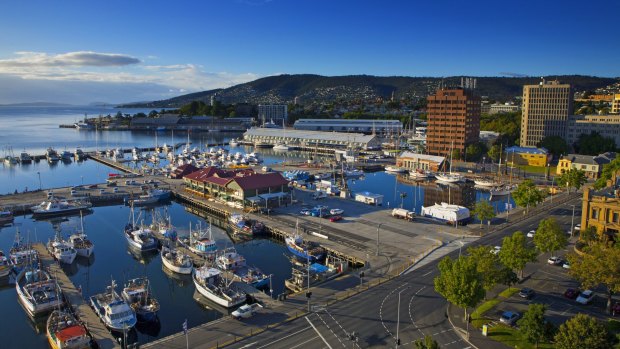
Constitution Dock, Victoria Dock, Hobart.Credit: Getty Images
Hobart is a city thankful for David Walsh. Taxi drivers sing his praises as they courier you from the airport to the city. Necks crane excitedly for a look whenever Walsh's silver mane is spied entering a restaurant or theatre. On a recent trip, I heard a radio announcer send out a brief (and unsponsored) "thank-you" to Walsh, just because he felt the urge.
And the city has reason to be thankful. The mastermind behind The Museum of Old and New Art – the art-lover's candyland that Walsh has dug into the earth just up the Derwent from Hobart – has almost single-handedly made Hobart the country's hippest short getaway. When the latest Tasmanian Visitor Survey showed a 14 per cent increase in visitors to the state during 2013, Tourism Industry Council Tasmania Chief Luke Marton put it down to "the MONA effect".
But those making for MONA's latest exhibitions (statues and set pieces from artist Matthew Barney's controversial film River of Fundament will be installed from November), or hipster magnet summer and winter festivals Mona Foma and Dark Mofo, should know that Tasmania's art offering does not end when you exit Walsh's museum – via the famous red tennis court.
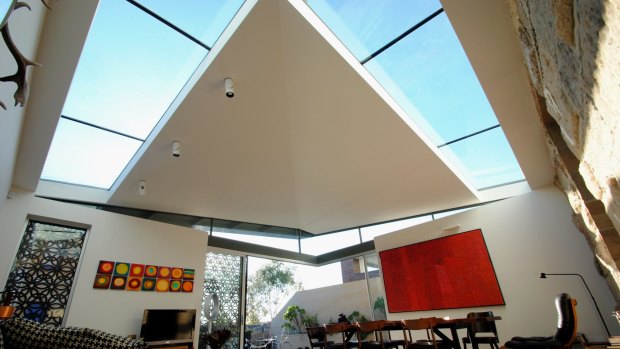
Beyond MONA: Arthouse Salamanca.
From tiny contemporary galleries in Hobart's coolest burgs, to an ambitious football field-sized project in the middle of the bush, to some of the most obsessive art-based accommodation in the country, our southernmost state has much to offer an enthusiast beyond Walsh's kingdom on the river.
If you're going to Hobart to immerse yourself in art, there are few better places to park your suitcase for your stay than the tellingly named Arthouse at Salamanca. Here – in what looks like a modest cottage at the water's end of Salamanca Place but is actually a sprawling three levels of Vogue Living-style fabulousness with views of the Derwent – you are surrounded by oils and drawings and watercolours. And names. Big art names.
Art is in the bones of the house as much as on the walls. It is owned by Genevieve de Couvreur, the Paddington-raised artist and ex-wife of Charles Blackman, and she renovated and decorated it for her own use. In one bedroom, you'll find iconic-looking Blackman originals, all roughly lined or morosely spread with dark ink; in another you'll find a drawing from the couple's daughter, singer Bertie Blackman, or one of de Couvreur's own. The University of Tasmania has presented an exhibition of the family's work, which also includes beautiful oils from son Felix.
It is in ''Muse'' that you can sleep with a Picasso: a 1952 sketch of a woman resting her head on her hands is hung on the wall.
Joel Meares
If you're lucky, de Couvreur may greet you on arrival and give you the tour, showing off three well-appointed bedrooms, an immense downstairs kitchen, a terrace framed by a sandstone seawall built by convicts (look closely and you'll notice handprints the workers used to "sign" their bricks) and a bathroom bigger than most Sydney galleries. Arthouse's masterpiece, however – and a surprise de Couvreur reveals with eyes a-twinkling – is the hidden room at the end a short sandstone tunnel off the mezzanine.
It is the kind of place in which you could hole up and wait for Armageddon (the pantry is as well stocked as the walls), but the house's other great benefit is its proximity to Hobart's major arts hot spots. It is a short walk to the Mona ferry – the camouflage-painted Mona Roma – but an even quicker stroll to the Salamanca Arts Centre, which you'll find behind a series of Georgian warehouses in Salamanca Place.
The Arts Centre is home to several resident companies, including the Tasmanian Theatre Company and the famous Terrapin Puppet Theatre, but also to a theatre where you can catch a show and to several galleries, among them the Top Gallery, dedicated to emerging artists, and the large Long Gallery, once a store for whaling products. It's an Escher-like tangle of galleries and discoveries in which you could lose yourself for hours.
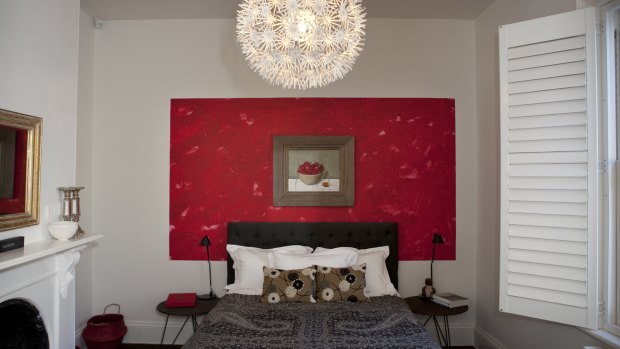
Artful surroundings: Arthouse Salamanca.
A few buildings up from Salamanca Place is the private Colville Gallery, with a focus on modern Australian art – on our visit, Hobart-based landscape artist Jock Young's works were on show. Young, and many other local artists, also sell their works at the Salamanca Markets on Saturdays, so you can peruse your art with a bacon-and-egg roll in hand.
Salamanca is pocked with small, diverting galleries like Colville. And just across Sullivans Cove, in the old IXL factory, you'll find the University of Tasmania's impressive contemporary galleries, Plimsoll and the student union-run Entrepot. But the traditional big guy in town, the sandstone Tasmanian Museum and Art Gallery, is a stellar state institution well worth a look. As well as sections dedicated to the state's natural and political history – there are Tasmanian tiger pelts along with a wall of protest signs heavy on deforestation and gay rights – the galleries towards the back of the museum showcase an impressive permanent collection along with touring exhibitions.
Local artist Pat Brassington's A Rebours (translation, roughly: against the grain) is the headliner when we pass through. Curated by 2014 Sydney Biennale artistic director Juliana Engberg, the exhibition spread works from the artist's 30-year-long career across four rooms, each as unsettling as the other; the photographer uses digital techniques to unnerve, exaggerating and altering isolated body parts – a tongue seems too pointy, too pink; a foot too long, but only just. She is one of Tasmania's best-known contemporary artists, and wandering through this chilling exhibition, it's easy to see why her fame has travelled.
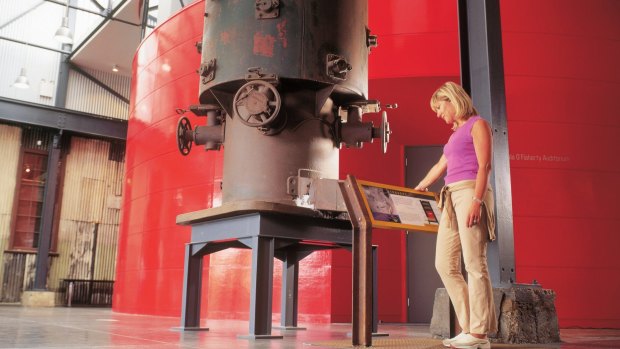
Queen Victoria Museum and Art Gallery.Credit: Garry Moore
The Brassington exhibition has since moved to the Devonport Regional Gallery, and it's worth chasing north.
The gallery is housed in a former Baptist church, originally built in 1904, and has a permanent collection of mostly Tasmanian art and craft kept in a newly built permanent storage facility. Curators draw from this collection for various exhibitions throughout the year, including subtle showstopper Fashion Fancies: Textiles from the Moon Collection, which featured dresses and textiles gifted to the gallery by the Moon family in 1975 and 1980. The collection of mostly early 20th-century frocks offered a frenzy of tulle and lace and bodices for those who just love to gawp at pretty things, but it also gave visitors a spying eye into evolution of fashion: you can see the sleeves disappear and necklines dive as the decades rolled on.
Just over an hour away, Launceston is a more traditional art-lover's stopover, with a smattering of private galleries, the Princess Theatre and the excellent Queen Victoria Museum and Art Gallery. The latter is a revelation: two storeys of collections that range from the state's earliest colonial works to more contemporary pieces, plus spaces for travelling exhibitions. On our visit, Lola Greeno's beautiful shellworks – as well as striking, large necklaces made of echidna spines – filled one temporary gallery, while another featured 21 objects, with 21 stories, sourced from across the state, each revealing a snippet of Tasmanian history.
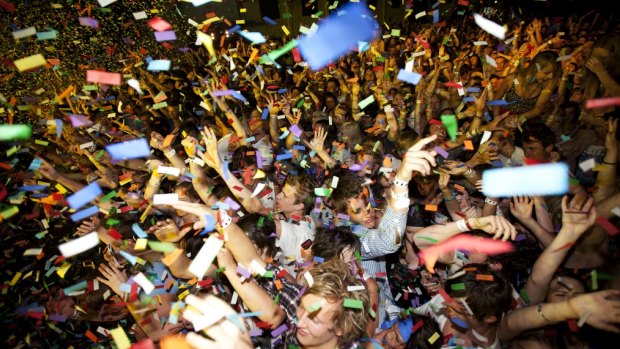
The MOFO crowd IN 2012.
Still, we were struck by the permanent exhibitions, losing ourselves for hours in galleries devoted to Tasmania's early artists, among them William Dowling, and their moody, blue-washed windows onto the state's natural wonders and colonial beginnings. There are no Brassington-style digital tweaks, but there is something unnervingly gothic about a lot of the work.
In Launceston, you might choose to stay in Dowling's former home, which is in some ways a more colonial take on the Arthouse Salamanca. The Hatherley Birrell Collection is the project of architect and designer couple Jack and Rebecca Birrell, who bought the 1830s mansion Hatherley House – where Dowling lived for a spell – and have transformed it into one of the city's best boutique accommodation options.
The couple live in the mansion – their walls are jig-sawed with pieces from their personal collection by artists like Whiteley and Nolan and Blackman (incidentally, Jack's godfather) – but they reserve part of the home for visitors. A love of art carries over into the guest accommodation: in a spectacular suite they call the Ballroom, their affection for the local arts scene is painted on the walls quite literally with a mammoth photo of a Tasdance performance forms the backdrop to the room's king-sized bed.
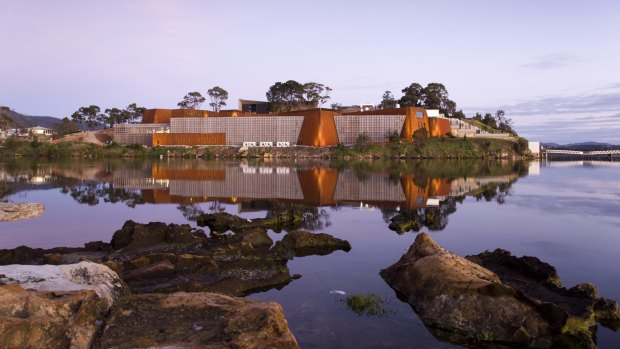
Tourist attraction: The Museum of Old and New Art, known as MONA, is one of Hobart's big drawcards.Credit: Peter Mathew
We stayed downhill from the mansion proper in a "garden pavilion" the Birrells have dubbed "Muse". From the outside it looks like a particularly blockish demountable classroom plonked incongruously in the manicured, magnolia-scented gardens, but inside it's all dark plush carpet, modern glass-box bathroom (the walls stained in a giant red-lipsticked smooch) and art – lots of art. It is in "Muse" that you can sleep with a Picasso: a 1952 sketch of a woman resting her head on her hands is hung on the wall.
The Birrells say the room is key to their forthcoming artist in-residency program, for which they will invite an artist to stay in the pavilion and develop a work the couple will show in the mansion. Or in the garden. Or on an outside wall. Whatever the artist imagines, really. But even if you aren't the chosen artist, you're welcome to be inspired – Birrell keeps a sketchbook by the bed with pencils. We left her a (rather good) picture of the view from our window: a vista of lush green grass, trees on the verge of blooming and, on our balcony, a bathtub hewn from stone.
Tasmania's reputation for quirkiness is well founded, and in an island of rather strange places Reliquaire might be the strangest. And we did factor Mona's famous poo room into that equation.
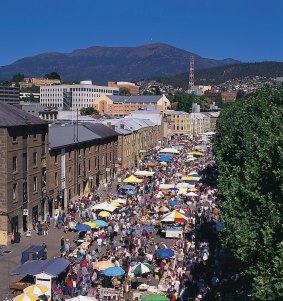
Crowded: Salamanca Market, Hobart.
You'll find this toy and doll shop – and coffee and sculpture and masquerade and cat mannequin shop – in Latrobe, among a cute strip of cafes and art stores on Gilbert Street, just off the Bass Highway south of Devonport or about an hour from Launceston. It's not a gallery, per se, and doesn't bill itself as an art destination, but for visual delights, as well as downright weirdness, Reliquaire rivals many galleries we've wandered through.
Some 26 rooms across two levels of a former hotel built in 1870 are crammed with marionettes and dolls and world globes and giant human-sized rabbit mannequins dressed as French courtiers. There's a stuck-in-time feel. Upstairs is a nursery tiered with rows of cots, each containing a baby doll, and downstairs a room of horrors – watch out for the dalek! – as well as a cave with gems that requires you to wear a hard hat before entry. You are given a map as you enter, as well as some fudge if you're lucky.
Reliquaire was not on our to-do list. We stumbled across it after visiting a Latrobe coffee shop and gallery and asking what the must-do thing in town was. A couple having coffee next to us suggested Reliquaire with a cheeky glint in their eyes and a determination not to say anything about what exactly Reliquaire was. "You just have to go and see it," they said. Some of your best Tasmanian arts adventures begin this way: with excited, unexplained recommendations. So it was with "the wall", another stumbled-across gem, this one smack in the centre of the island in the township of Derwent Bridge near Lake Saint Claire. What was The Wall? we asked. "You just have to go and see it," we were told.
I won't be so coy. The Wall in the Wilderness is a purpose-built gallery designed to house Greg Duncan's ambitious 100-metre long wooden sculpture project, The Wall. The sculptor has been working on it for 11 years: in the end, it will feature 100 one-metre-wide, three-metre-high wooden relief sculptures that depict the history of Tasmania.
There are pioneering horse-drawn carts bubbling out from the Huon pine slabs, as well as foresters and giant birds and thylacines (Tasmanian tigers).
Sipping tea with Duncan by a fire and listening as he explains his strange vision, it's hard not to be reminded of another Tasmanian eccentric with a bit of a wild idea he's turned into a reality. Duncan does not turn heads when he walks into a theatre. And his wall has not been written up in The New Yorker. But when we join him on a quick stop to the local pub, he does get a random thank-you from the owner.
TRIP NOTES
MORE INFORMATION
GETTING THERE
Qantas, Jetstar and Virgin fly daily to Hobart and Launceston.
STAYING THERE
Genevieve de Couvreur The Arthouse Salamanca features a gallery-like selection of art and is well situated for museum-hopping. It can sleep six and there is an Arthouse in the Bay of Fires region too. From $660 a night (2014); see arthousesalamanca.com.au.
In Launceston, the Hatherley Birrell Collection similarly wears its love of art all over the walls – you can sleep next to a Picasso and is a short drive to the centre of town. Hatherley Birrell Collection rooms from $240 a night; see hatherley.com.au.
The writer travelled as a guest of Tourism Tasmania.
Sign up for the Traveller Deals newsletter
Get exclusive travel deals delivered straight to your inbox. Sign up now.